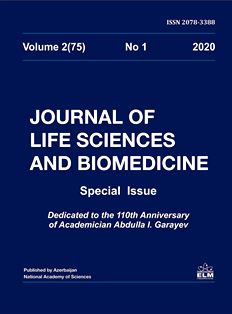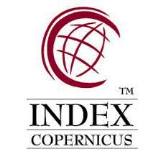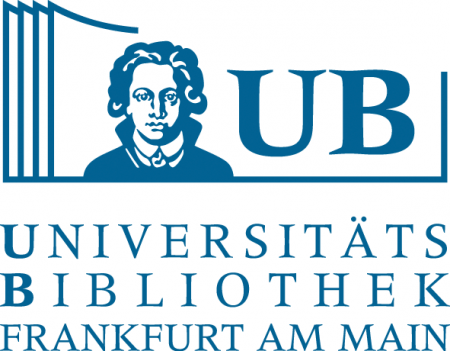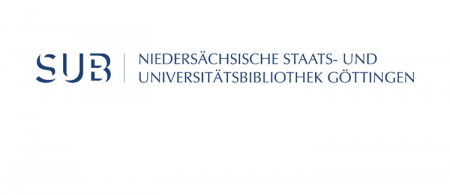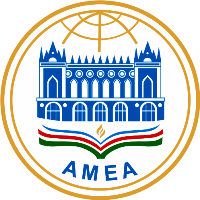
Some biomorphological features of the Stevia rebaudiana Bertoni and its in vitro cultivation
Research article: Some biomorphological features of the Stevia rebaudiana Bertoni and its in vitro cultivation
Author (s): S.Sh. Asadova1,2*, Sh. N. Gasimov3 pdf, doi.org/10.29228/jlsb.6
1Institute of Molecular Biology & Biotechnologies, Azerbaijan National Academy of Sciences, 11 Izzat Nabiyev Str., Baku AZ1073, Azerbaijan
2Research Institute of Crop Husbandry, Ministry of Agriculture of the Republic of Azerbaijan, Pirshagi Settl., Farm No. 2, Baku AZ1098, Azerbaijan
3Central Botanical Garden, Azerbaijan National Academy of Sciences, 40 Badamdar Highway, Baku AZ1004, Azerbaijan
*For correspondence: biotexnoloqaz@mail.ru
Received: October 30, 2020; Received in revised form: March 21, 2021; Accepted: May 03, 2021
Abstract
Stevia rebaudiana Bertoni was reproduced vegetatively under greenhouse conditions and its different developmental stages were studied. Seeds were obtained from Absheron cultivated plants. In order to obtain cell culture under in vitro conditions, various plant organs were isolated and transferred to nutrient environments that differed in mineral and phytohormonal composition. The reaction of plant tissue culture to the in vitro conditions was studied.
Keywords: Stevia rebaudiana Bertoni, in vitro, morphogenesis, developmental stage, explant, sterilization mode,
References
Abou-Arab A.E., Abou-Arab A.A., Abou-Salem M.F. (2010) Physicо-chemical assessment of natural sweeteners steviosides produced from Stevia rebaudiana bertroni plant. A.J. of Food Science 4(5): 269–281.
Amin K., Ozgen S., Selamoglu Z. (2017) Stevia Rebaudiana: A Potential Boon for Human Health. SM J Med Plant Stud. 2017; 1(1): 1005
AO, WHO (1985) Food and Agriculture Organization of The United Nations L. World Health Organization Energy and Protein Requirements. Reports a Joint FAO/WHO Export Consolation. Technical Report Series No 724.
Bodrug M.V. (1995) Introduction of Stevia (Stevia rebaudiana Bertoni) in Moldova /M.V. Bodrug// Materials of scientific conference “Biological diversity. Plant Introduction.” St. Petersburg: 142-143.
Bozhimirov S., Slavova Y. (2011) Research on obtaining and growing of Stevia rebaudiana Bertoni seeds in the conditions of Bulgaria. Растен. Науки,48(№ 4): 330-333.
Brahmachari G., Mandal L.C., Rajeev R., Mondal S., Brahmachari A.K. Stevioside and related compounds – molecules of pharmaceutical promise: a critical overview. Arch. Pharm. Chem. Life Sci., 344 (2011): 5-19.
Carakostas M.C., Curry L.L., Boileau A.C., Brusick D.J. (2008) Overview: the history, technical function and safety of rebaudioside A, a naturally occurring steviol glycoside, for use in food and beverages. Food Chem. Toxicol., 46: 1-9.
Ghosh S., Subudhi E., Nayak S. (2008) Antimicrobial assay of Stevia rebaudiana Bertoni leaf extracts against 10 pathogens. Int. J. Integr. Biol., 2 (1): 27-31
Gorbatenko L.E., Dziuba O.O. (2003) Stevia as a valuable food and medicinal plant. In: Materials of V International symposium "New and unconventional plants and prospects for their use", 3: 317-319.
Gregersen S., Jeppesen P.B., Holst J.J., Hermansen K. (2004) Antihyperglycemic effects of stevioside in type 2 diabetic subjects. Metabolism, 53: 73-76.
Kolesnikova E.O., Zhuzhzhalova T.P. (2012) Features of callusogenesis and regeneration of Stevia rebaudiana (Bertoni) in in vitro culture // Scientific reports of BelSU. Natural Sciences series, 15 (134), issue 20: 28-32.
Kononova E.A. (2015) Ecological and biological features of new varieties of Stevia rebaudiana (Bertoni) Hemsley when introduced into the culture in the Central Ciscaucasia. Ph.D. thesis abstract. Stavropol: 24 p.
Kuznetsova I.V. (2014) The content of free amino acids in the leaves of dried stevia (Stevia rebaudiana Bertoni) and definition of their role / Bulletin of the Belarusian State Agricultural Academy, No. 1: 106-110.
Lavrenova V. (2018) Feed and feed additives http://www.tsenovik.ru/articles/korma-i-kormovye-dobavki/stimulyatory-appetita-dlya-zhivotnykh/
Limarenko A.Y., Molokovsky D.S., Anikin I.V et al. (1995) Stevia rebaudiana: Indoor cultivation and pharmacological properties. Prospects of application. Materials of scientific conference “Biological diversity. Plant Introduction”. St. Petersburg: 156-157.
Litvinova I.I., Gladkov E.A. (2012) Introduction to the culture of cells in plants used as fodder, medicinal and decorative, in order to obtain stress-resistant forms. Journal of Agricultural Biology, No 4: 94-98
Lyakhovkin A.G. Nikolaev A.P., Uchitel V.B. (1999) Stevia as a honey herb. St. Petersburg: Publication Group "All", 36 s.
Massoud M.I., Ziad N.N., Abdel G.M. (2005) Studies on the development of low calorie dairy food products using fruline and stevia sweetener Alexandria J. Agr. Res., 50: 47-56
Ozerova V.A. (2005) Stevia. Honey grass against diabetes. Publication Group "All", St. Petersburg: 64 s.
Podporinova G.K., Verzilina N.D., Polyansky K.K. (2005) The chemical composition of herbal substances of stevia. University News. Food Technology, No 4: 74-75.
Podporinova G.K. (2007) Features of the amino acid composition of stevia vegetative organs / G.K. Podporinova, T.P. Zhuzhzhalova, N.D. Verzilina, K.K. Polyansky // Bulletin of the RAAS. No. 3: 91-92.
Pototsky V.A., Pokrovsky V.N. (2004) Stevia as the sweet secret of nature. European Academy of Natural Sciences, International Scientific and Technical Center "Health, Sport, Business", Moscow: 15 p.
Rastovarov E.I., Trukhachev V.T., Filenko V.F., Zadorozhnaya V.N., Starodubtseva G.P. (2009) Feed supplement for hypotrophic piglets using stevia. Patent 2360435. http://www.findpatent.ru/patent/233/2339227.html
Semenova N.A. (2004) Stevia is a 21st century plant. St. Petersburg: Dila: 155-157.
Sidorov V.A. (1990) Plant biotechnology. Cell breeding. Kiev: Naukova Dumka, 280 p.
Smolyar V.I., Saliy N.S., Tsapko E.V., Lavrushenko L.F., Grinenko S.N. (1990) Biomedical research on the safety of stevia leaves. Introduction to the culture of stevia - a source of low-calorie sugar substitute. Kiev: 112-117.
Sokolov M.I., Verzilina N.D., Rudakov O.B. (2004) Express analysis of sugar by high performance liquid chromatography. Storage and processing of agricultural raw materials. No 3: 94-95.
Sumida T. (1980) Studies on Stevia Rebaudiana Bertoni as a New Possible Crop for Sweetening Resource in Japan, J. Cent. Agric. Exp. Stn., 31(1): 67–71.
Surkova N.Ye. (2007) The use of stevia refinement products in the diet of lactating cows. Ph.D. Thesis in Agriculture Science. Voronezh, 117 p.
Tanaka O. (1980) Chemistry of Stevia rebaudiana Bertoni – new source of natural sweeteners. Resent Adv. Nat. Prod. Res., 1: 111–119.
Verzilina N.D., Zhuzhzhalova T.P., Znamenskaya V.V., Zimin M.V. (2005) Features of seed propagation of stevia in the Central Black Earth Region. Bulletin of the RAAS, No 6: 34-35.
Verzilina N.D. (2005) Stevia (Stevia rebaudiana Bertoni) in the Central Black Earth Region (agrobiological and physiological-biochemical aspects of culture). Abstract of Ph.D. Thesis in Agriculture Science, Voronezh, p. 43.
Youssef, O.A. Abd El-Hady N.R., Sahar M.A. et al. (2007) Studies of hypoglycemic effect of Stevia rebaudiana Bertoni leaves their aqueous extract and stevioside on diabetic rats. J. Agr. Res., 33: 616-630.
Zimin M.V. (2006) Influence of regulatory factors on the biomorphological development of Stevia cultivars under the conditions of the Central Black Earth Region. Ph.D. thesis abstract. Ramon: 23 p.
Zubenko V.P. (1990) A New Natural Substitute for sugar. Bulletin of Agricultural Science, No 1: 16-18.

